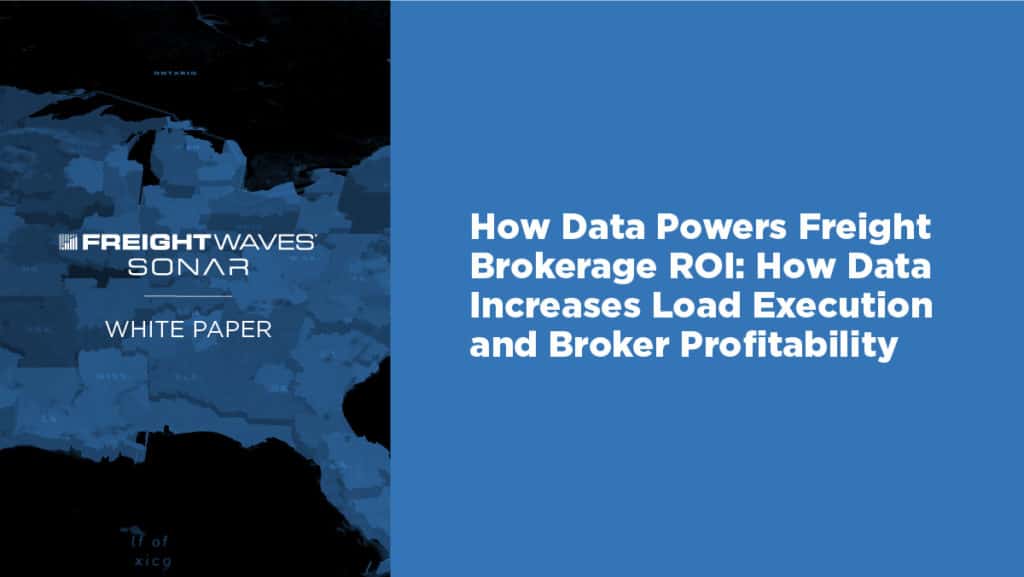Transportation brokers continue to search for new applications and uses of technology to empower more informed decision-making. And in recent years, the application of freight analytics has grown more manageable and faster to use. However, the application of such data does not necessarily translate into meaningful improvements within day-to-day operations. Yes, analytics add value, but that value often gets overshadowed by the sheer volume of freight data insights available. Therefore, transportation brokers need to know how freight data can add value, why actionability and timeliness enable accurate fast-paced decisions, and a few tips to apply FreightWaves SONAR data every morning.
Freight data is precious, but in its raw form, it’s almost meaningless. Freight data can help transportation brokers understand market volatility, allocate assets, identify high priority loads, and negotiate trucking contracts with the carrier. Remember, transportation brokers’ whole business is freight management. The lack of freight data amounts to managing the company without any visibility into current operations or transportation costs. That is simply unacceptable.
Moreover, the freight market’s worsening problems, including limited capacity, uncertainty over economic instability, growing demands of e-commerce, and other factors, will chip away at transportation brokers’ profit margins. Yet, brokers still experience a few top challenges in applying analytics to solve the pre-existing problems. According to Gartner, these challenges include:
The irony lies in the advancement of digital brokerages despite the obstacles. Since digital brokerages are expected to surpass $30 billion within 10 years, reports John Paul Hampstead of FreightWaves, it’s time for freight brokers to turn to and maximize the use of freight data in both tracking logistics metrics and day-to-day operations management.

Transportation brokers may sound like a truckload-only operation. However, they have fingers on all parts of the supply chain. That includes sourcing raw materials, production facilities’ dock scheduling, warehousing considerations, and customer service through last-mile logistics. Regardless of the size or scale, the use of actionable, timely data ensures fast-paced decisions continue uninterrupted. And it’s in this space where big data analytics can add the most value.
McKinsey & Company reported that supply chain analytics opportunities reside across sales, sourcing, production, warehousing, transportation, point-of-sale management, and customer interactions. Even for brokers with a trucking division or those offering value-added services, finding a more cohesive market view is critical to success.
As an example, the increased port activity will eventually translate into added trucking demands for nearby markets. That increased demand could lead to added congestion at neighboring distribution centers, resulting in a higher wait time for loading/unloading. And as the flow moves, those delays add up to impacts on customer service and order fulfillment. With more insight into internal and external activities, transportation brokers can consider the factors affecting their service offerings, including those that are not necessarily isolated to transportation or value-added services.
Applying freight data and analytics-driven insights sound simple on paper or in a blog. However, the real-world use cases and best practices can be more involved. Transportation brokers already have many responsibilities, so it’s important to know what to look for and how to use them. That’s where following these six tips for applying FreightWaves SONAR data at the start of each day comes into play:
The only way forward in logistics lies in the careful analysis of transportation data. And transportation brokers can make the most of freight data with the real-time capabilities and actionable values found within FreightWaves SONAR analytics. Stop wasting time trying to make sense of limited datasets and outdated rating tools. Click the button below to request a FreightWaves SONAR demo today.
